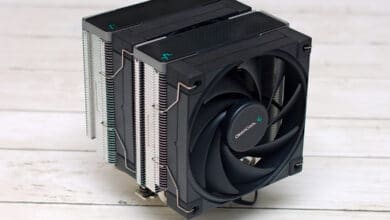
Underfloor heating is a popular and convenient heating system that ensures even heat distribution in the room. However, like any sophisticated system, it needs some attention from time to time to function optimally. One of the most important maintenance tasks for underfloor heating is venting. Why is this important? Air bubbles inside can impair efficiency, lead to uneven heat dissipation and, in extreme cases, even paralyze the entire system. Here you can find out step by step how to correctly bleed, adjust and maintain your underfloor heating so that you don’t have to freeze.
Why is it so important to bleed the underfloor heating?
Air in the heating system is not just a minor disruptive factor – it can significantly reduce the efficiency of your underfloor heating, similar to conventional radiators. The difference, however, lies in the way this air accumulates and has an effect. With underfloor heating, air bubbles disrupt the flow of heating water in a larger and often hidden system under the floor, resulting in uneven and ineffective heat output. This is noticeable by cold spots on the floor, similar to the cold areas you feel with unvented radiators. More problematic, however, is that due to their larger and more complex nature, such air accumulations in underfloor heating systems can even lead to complete heating failure in the worst case – a risk that can often be noticed and rectified more quickly with conventional radiators.
But that’s not all: a heating system filled with air has to work harder to generate the same amount of heat. This means that your energy consumption – and therefore your heating costs – increase unnecessarily. By regularly venting your underfloor heating, you not only improve its efficiency and prevent breakdowns, but also save money in the long term. At the same time, you ensure constant, pleasant warmth in your home.
What you should know before bleeding your underfloor heating
Before you start the process of bleeding your underfloor heating, there are some important preparations to make and basic knowledge about the installed system is very important. Start by making sure that the heating is switched off and has cooled down completely. This is important so that you don’t burn yourself during the process. Next, you should familiarize yourself with the specific structure of your underfloor heating system. It is important to identify the supply and return pipes and the air vent valve. Note that some systems have automatic air vents, which can make the job much easier.
It is also advisable to follow the manufacturer’s instructions for your heating system, as some models may require special venting methods. Prepare a cloth and a container to catch any leaking water. It is also important to check the pressure in the system both before and after bleeding. This ensures that the pressure remains within the recommended range and that your heating system is working optimally.
Check the water quality before bleeding
Before you start bleeding, it is important to check the water quality in your heating system. The suitability of the water for the bleeding process plays a key role in preventing damage to the heating system. According to the VDI 2035 guideline, factors such as the hardness, pH value and conductivity of the water are decisive. If necessary, you should treat the water accordingly or use pre-treated water to ensure that it meets the requirements of your heating system
Step-by-step guide: Venting underfloor heating correctly
Now that you’re prepared, let’s move on to the practical part: bleeding the underfloor heating. This process is not complicated, but it does require care and patience. Here is a detailed step-by-step guide showing you how to proceed:
- Make sure the heater is turned off and cooled down. This prevents injury and makes the process easier.
- Fully open the thermostatic valves on your underfloor heating system to ensure maximum flow when the system is switched back on.
- Locate the bleed valve, which is usually located on the underfloor heating manifold. In some cases, it is also located on the heating circuits themselves.
- Place a cloth under the valve to catch any leaking water and have a drip tray ready.
- Use a suitable bleed wrench or – if available – a pair of pliers to slowly open the bleed valve. Turn it counterclockwise.
- Wait until air escapes and only water comes out. This indicates that the air has completely escaped.
- Close the valve again by carefully turning it clockwise. Be careful not to overtighten it to avoid damaging it.
- Repeat this process for all heating circuits of your underfloor heating system if necessary.
- Once you have bled all the heating circuits, you should switch the heating back on and bring it up to normal operating temperature.
- After a few hours, check that the heat is evenly distributed and that there are no more noises. If problems persist, it may be necessary to bleed the system again or have it professionally serviced.
- Check the pressure in your heating system after bleeding. If the pressure is too low, water may need to be added to restore normal operating pressure. This will ensure that your underfloor heating works efficiently and prevent long-term damage to the system.
And voilà! With these steps, you will have completed the process of bleeding underfloor heating in no time at all.
6 tips for optimal underfloor heating settings
Once you have successfully bled your underfloor heating, it is important to set it correctly to ensure optimum performance and efficiency. A correctly set underfloor heating system ensures a comfortable indoor climate and can help you save energy and money. Here are 6 tips on how to set your underfloor heating economically:
- Start with the basic rule: the room temperature should be set to a comfortable level, usually between 20°C and 22°C.
- Use programmable thermostats to adjust the temperature depending on the time of day and how the room is used. At night and when you are not at home, the temperature can be lowered.
- Make sure that the flow temperature is not set too high. A lower flow temperature is often sufficient for underfloor heating and saves energy.
- Make sure that the heating curve of your heating system is set correctly. This determines how the flow temperature is regulated depending on the outside temperature.
- Avoid placing furniture or carpets on the heating surfaces, as this can hinder heat dissipation and reduce efficiency.
- Regular maintenance and cleaning of the underfloor heating is crucial to maintain the performance of the system and extend its life.
Differences between bleeding and flushing underfloor heating
Although both bleeding and flushing are important maintenance tasks for your underfloor heating system, they serve different purposes and require different procedures.
Bleeding the underfloor heating system focuses on removing air from the system, which can lead to uneven heat output and reduced efficiency. You can usually carry out this task yourself by following the steps described in the instructions.
Flushing, on the other hand, is necessary to remove deposits such as limescale or rust from the pipes. These deposits can build up over time, especially in older systems, and affect the performance of the heating system. As flushing requires special equipment and a more in-depth knowledge of the heating system, it is recommended to leave this task to a professional. Flushing the underfloor heating system regularly helps to maintain efficiency and keep the system in good condition in the long term.
When should you seek professional help?
Although you can carry out many aspects of your underfloor heating maintenance yourself, there are situations where it is advisable to seek professional help. For example, if you notice that the heating is not working properly despite correct bleeding and adjustment, or if there are leaks, you should call in professional help. Specialist knowledge is also required for more complex tasks such as flushing the underfloor heating, refilling water or replacing components. It also makes sense to commission a specialist company to maintain the system at regular intervals to ensure its efficiency and safety in the long term.
The right care for long-lasting warmth
Now that we have gone through the various aspects of maintenance – from carefully bleeding the underfloor heating system to the necessary professional flushing – it is clear that regular maintenance is essential to maintain the performance and efficiency of your heating system. By taking care of the simple steps of maintenance yourself and calling in expert help when needed, you can ensure that your underfloor heating provides a comfortable and even heat for a long time.



